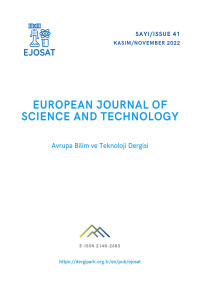Abstract
It is possible to better provide the security of the codebase and keep testing efforts at a minimum level by detecting vulnerable codes early in the course of software development. We assume that nature-inspired metaheuristic optimization algorithms can obtain “optimized patterns” from vulnerabilities created in an artificial manner. This study aims to use nature-inspired optimization algorithms combining heterogeneous data sources with the objective of learning optimized representations of vulnerable source codes. The chosen vulnerability-relevant data sources are cross-domain, involving historical vulnerability data from variable software projects and data from the Software Assurance Reference Database (SARD) comprising vulnerability examples. The main purpose of this paper is to outline the state-of-the-art and to analyze and discuss open challenges with regard to the most relevant areas in the field of bio-inspired optimization based on the representation of software vulnerability. Empirical research has demonstrated that the optimized representations produced by the suggested nature-inspired optimization algorithms are feasible and efficient and can be transferred for real-world vulnerability detection.
Keywords
Feature Selection Nature-inspired Algorithm Optimization Representation learning Software Vulnerability.
References
- T. Mikolov, K. Chen, G. Corrado, and J. Dean, “Efficient estimation of word representations in vector space,” arXiv preprint arXiv:1301.3781, 2013.
- Shi, Y., Wang, Y., & Zheng, H. (2022). Wind Speed Prediction for Offshore Sites Using a Clockwork Recurrent Network. Energies, 15(3), 751.
- J. Koutnik, K. Greff, F. Gomez, J.Schmidhuber. "A Clockwork RNN," Proceedings of the 31st International Conference on Machine Learning, 2014,PMLR 32(2):1863-1871.
- Khurma, R.A., Aljarah, I., Sharieh, A.A., & Mirjalili, S.M. (2019). EvoloPy-FS: An Open-Source Nature-Inspired Optimization Framework in Python for Feature Selection. Algorithms for Intelligent Systems.
- Ö. B. Dinler, C. B. Şahin, “Prediction of phishing web sites with deep learning using WEKA environment,” Avrupa Bilim ve Teknoloji Dergisi, vol. 24, pp. 35-41, 2021. doi:10.31590/ejosat.901465.
Abstract
It is possible to better provide the security of the codebase and keep testing efforts at a minimum level by detecting vulnerable codes early in the course of software development. We assume that nature-inspired metaheuristic optimization algorithms can obtain “optimized patterns” from vulnerabilities created in an artificial manner. This study aims to use nature-inspired optimization algorithms combining heterogeneous data sources with the objective of learning optimized representations of vulnerable source codes. The chosen vulnerability-relevant data sources are cross-domain, involving historical vulnerability data from variable software projects and data from the Software Assurance Reference Database (SARD) comprising vulnerability examples. The main purpose of this paper is to outline the state-of-the-art and to analyze and discuss open challenges with regard to the most relevant areas in the field of bio-inspired optimization based on the representation of software vulnerability. Empirical research has demonstrated that the optimized representations produced by the suggested nature-inspired optimization algorithms are feasible and efficient and can be transferred for real-world vulnerability detection.
Keywords
Feature Selection Nature-inspired Algorithm Optimization Representation learning Software Vulnerability. Feature Selection, Nature-inspired Algorithm, Optimization, Representation learning, Software Vulnerability.
References
- T. Mikolov, K. Chen, G. Corrado, and J. Dean, “Efficient estimation of word representations in vector space,” arXiv preprint arXiv:1301.3781, 2013.
- Shi, Y., Wang, Y., & Zheng, H. (2022). Wind Speed Prediction for Offshore Sites Using a Clockwork Recurrent Network. Energies, 15(3), 751.
- J. Koutnik, K. Greff, F. Gomez, J.Schmidhuber. "A Clockwork RNN," Proceedings of the 31st International Conference on Machine Learning, 2014,PMLR 32(2):1863-1871.
- Khurma, R.A., Aljarah, I., Sharieh, A.A., & Mirjalili, S.M. (2019). EvoloPy-FS: An Open-Source Nature-Inspired Optimization Framework in Python for Feature Selection. Algorithms for Intelligent Systems.
- Ö. B. Dinler, C. B. Şahin, “Prediction of phishing web sites with deep learning using WEKA environment,” Avrupa Bilim ve Teknoloji Dergisi, vol. 24, pp. 35-41, 2021. doi:10.31590/ejosat.901465.
Details
| Primary Language | English |
|---|---|
| Subjects | Engineering |
| Journal Section | Articles |
| Authors | |
| Publication Date | November 30, 2022 |
| Published in Issue | Year 2022 Issue: 41 |

